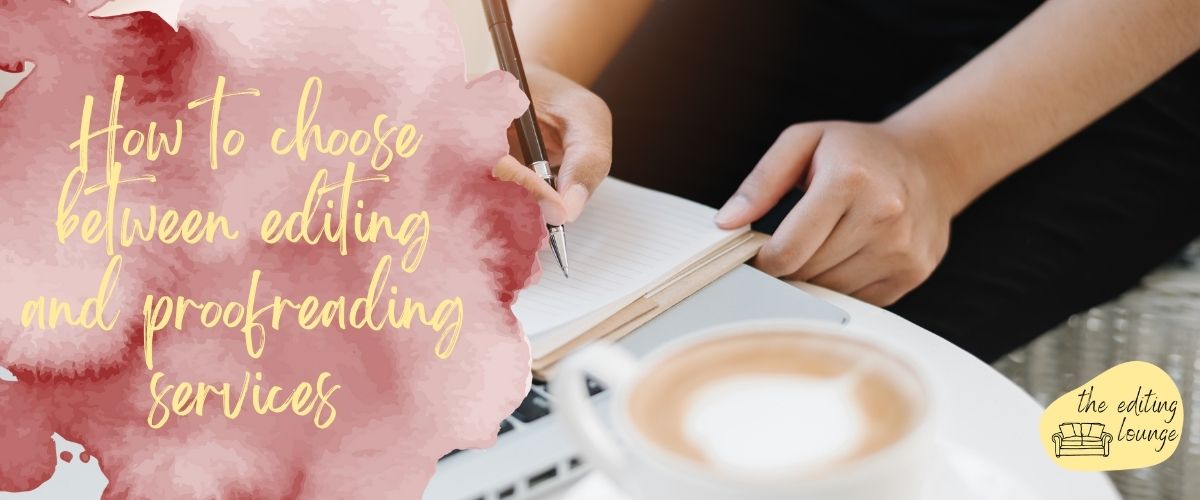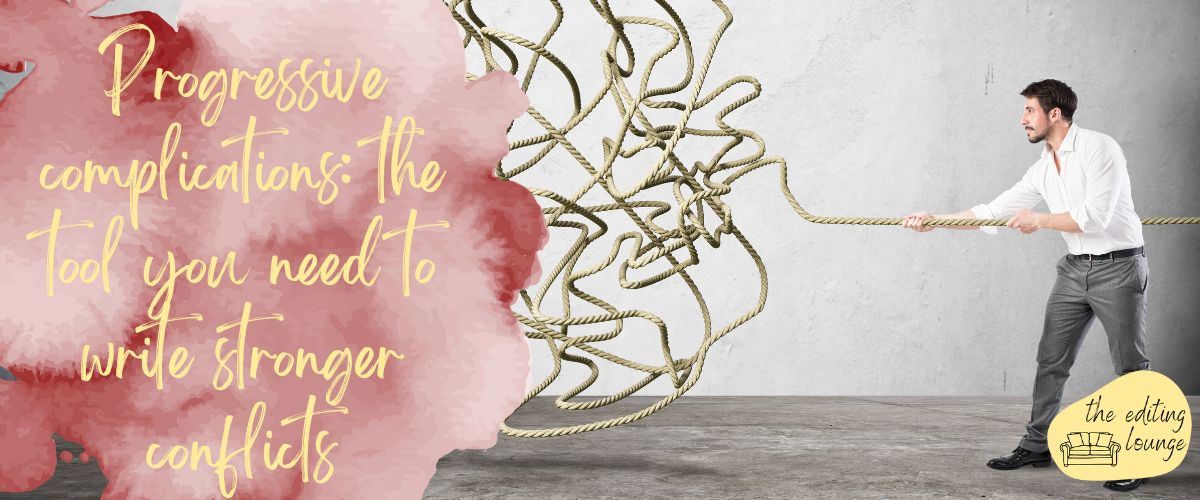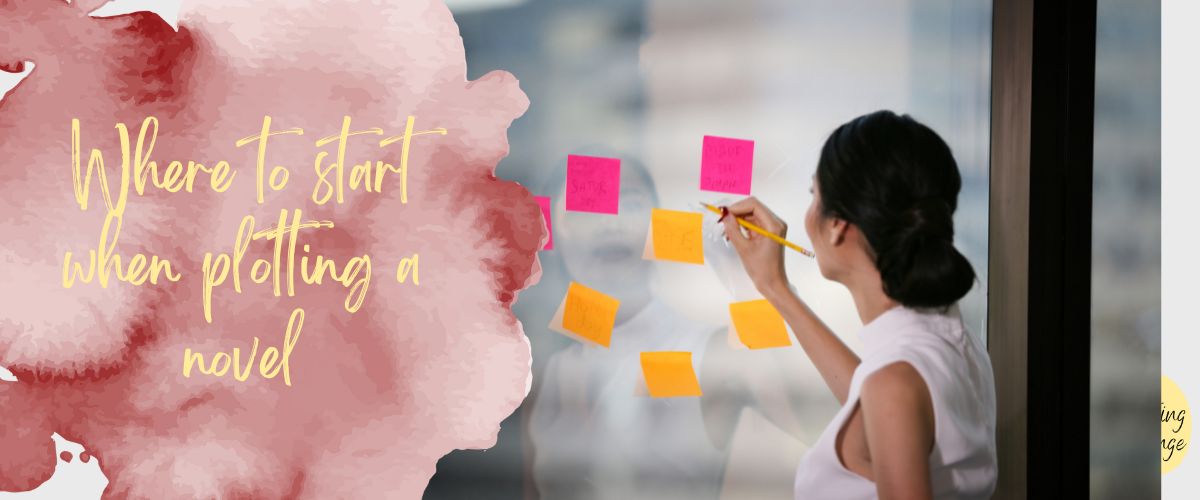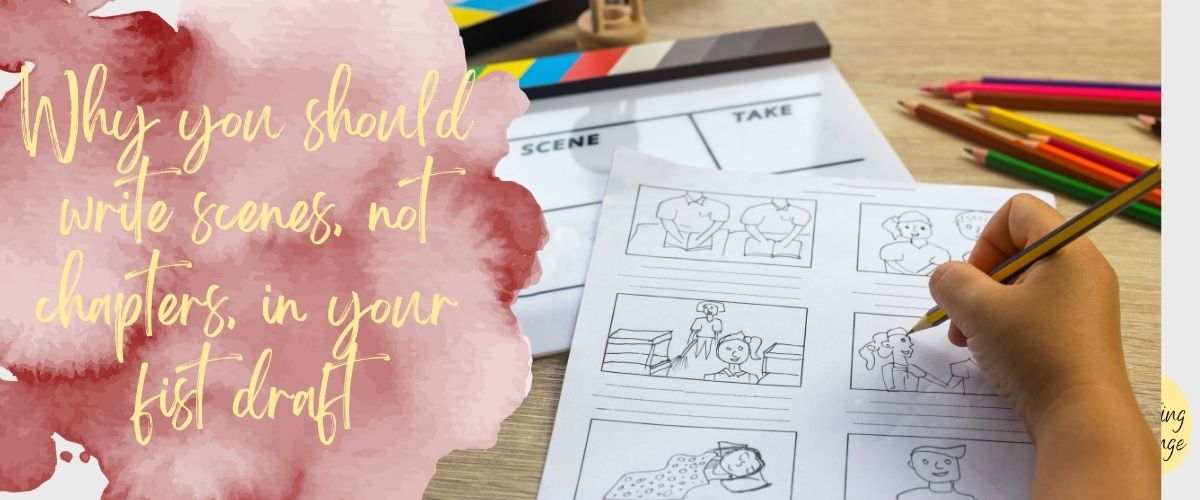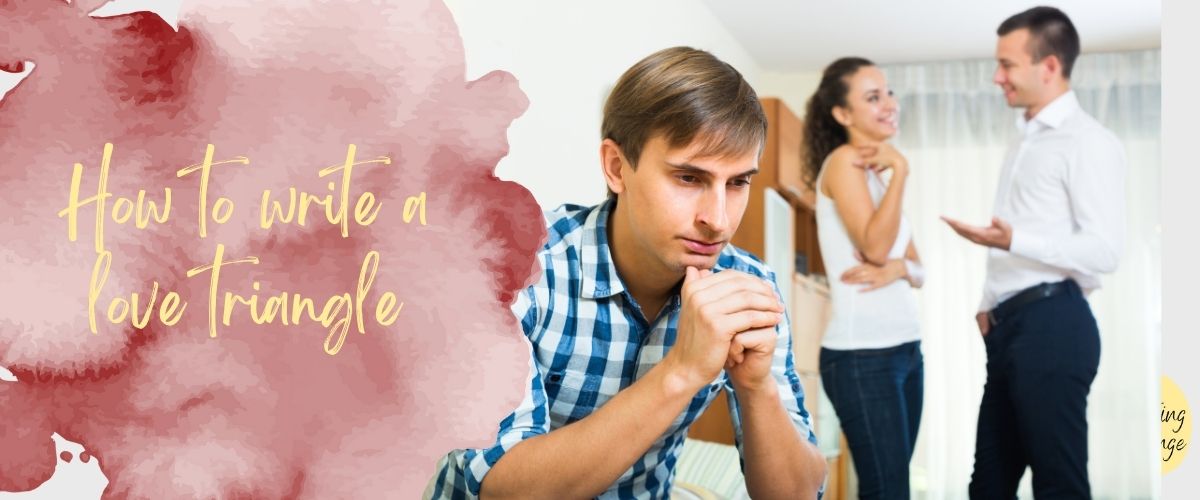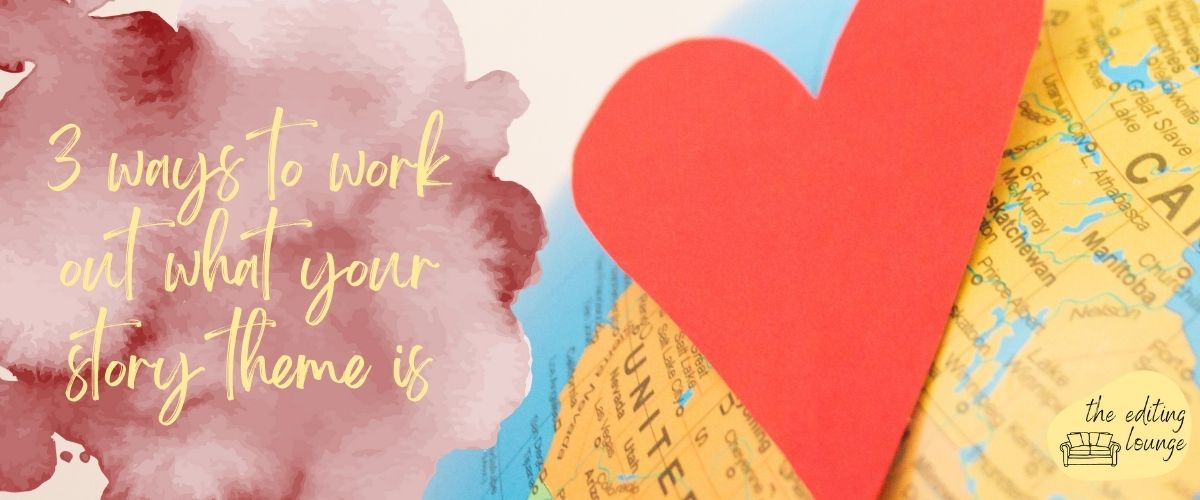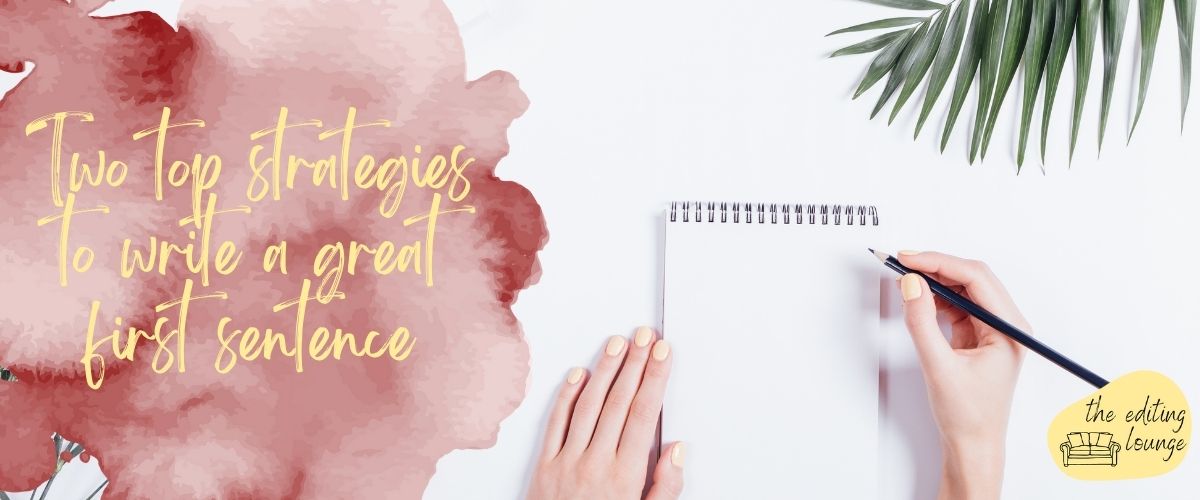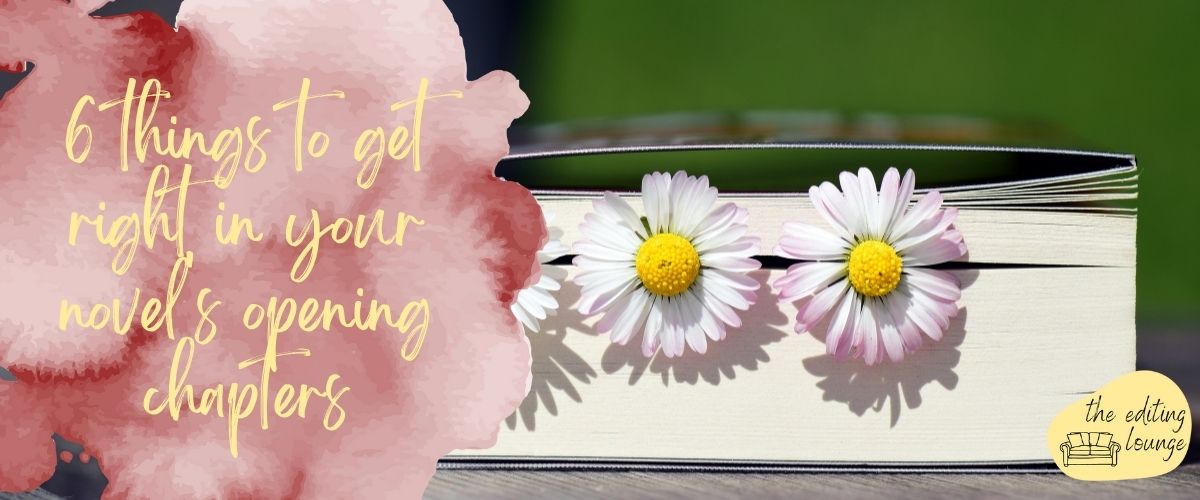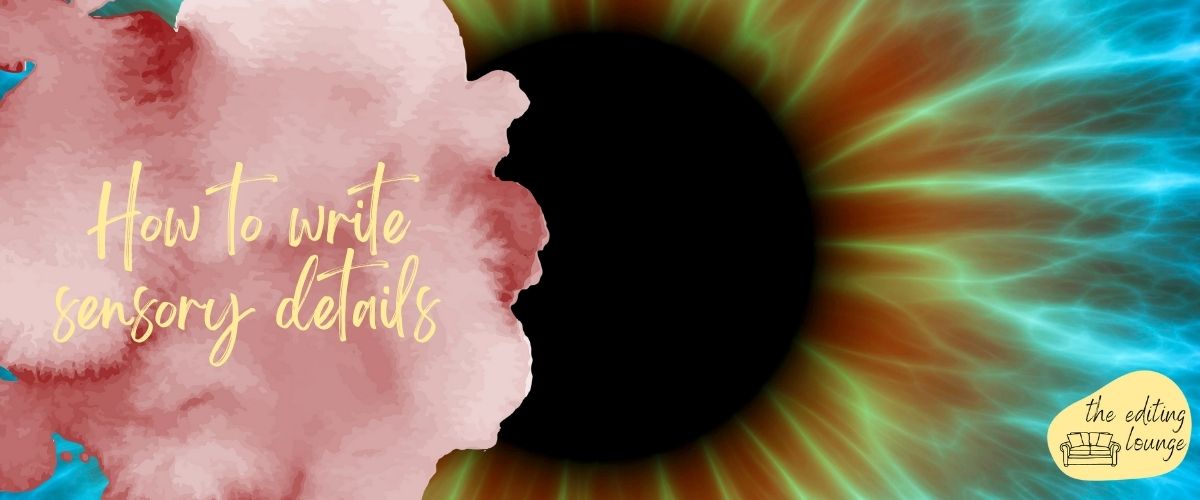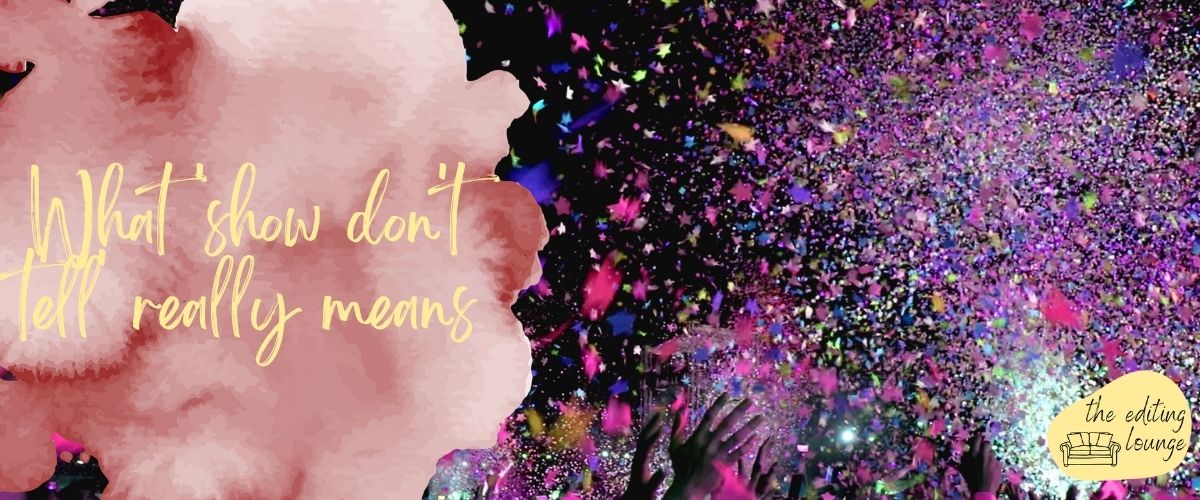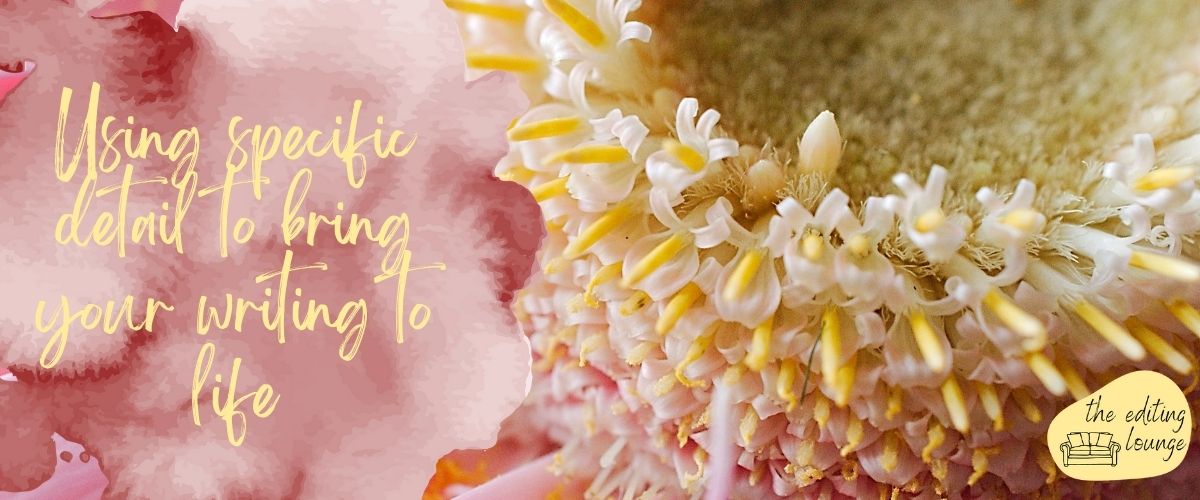If you’re working on a novel or a short-fiction collection, you’ll likely reach a point where you’d like a helping hand with your writing. You need editing services. But what kind of editor should you hire?
Some think of editing as wizardry – dark and secretive and full of unknowns. Others wildly underestimate the work involved in editing services. In my experience, most people think of editing as draping yourself over a comfy chair and reading through a stack of papers with a gel pen in one hand and a slice of smashed-avocado toast in the other.
I’m sorry to say this is not the case. So, what is editing if it’s not moving the odd comma with a swipe of the gel pen? And how does each editing service differ?
Table of Contents
The four main editing services

The four main editing services are all very different. You’ll need a different service depending on how far through the drafting process you are and what type of writing project you’re working on.
The four main editing services are:
- Developmental editing
- Line editing
- Copyediting
- Proofreading
I’ll also touch on manuscript assessments and beta reading, which fall between the gaps in this list of four.
This blog post is mainly for fiction writers, but the copyediting and proofreading sections are also relevant for those who are writing non-fiction, academic, or marketing materials.
Developmental editing
Also known as substantive editing, story editing, and structural editing.
Once you’ve completed multiple drafts of your novel, self-edited, and worked with beta readers (you can find these for free, but more on that later), your first editing stop should be the developmental edit.
This editing service will help you deconstruct your novel to rewrite it in its best form, ready for a line editor.

How developmental editing works

A developmental editor will address big-picture issues in your manuscript. These issues often focus on plot, characterisation, structure, theme, genre, and narrative style.
For example, your editor might note any scenes that lack cause and effect, inconsistencies in characterisation, plot holes, or superfluous scenes.
But don’t expect a developmental edit to address the finer details. You won’t receive thousands of sentence-level changes that hone the smaller details of your writing – that’s line editing. We’ll move on to that next.
How a developmental editor delivers their work
Once you’ve received your edit – which often comes in the form of an editorial report or letter – you’ll most likely need to rewrite large chunks of your manuscript.
Some developmental editors make a few notes using comment bubbles in the manuscript too. Whether or not they make these additional comments, a developmental editor will summarise how you can improve your manuscript, not make the changes for you.
After a developmental edit, you’ll often feel you need to take a step back to move forward again. This is because developmental fiction editing is like taking a saw to a project – you can expect to lose large sections of prose, fire and employ characters, add new scenes, or redirect the plot.

How to save money on a developmental edit

Some writers try to cut costs by skipping the developmental edit and moving straight on to a line edit. But taking this approach is like icing a cake you haven’t made yet.
However, my line editing service has a developmental side to it, as I keep an eye out for any bigger-picture issues that haven’t yet been solved. I do this because some of the writers I work with have fixed some of the developmental issues before moving on to line editing, but there are still a few big-picture problems that they’ve only partly solved.
A blended approach can be helpful if you only have the odd passage that needs a developmental edit, but there’s no point in paying someone to prune your writing if you need to make structural changes.
Quick tip: if you’re worried about financing a developmental fiction editing service, you can get a cheaper variation in the form of a ‘manuscript evaluation’ or ‘manuscript critique’. These editorial reports don’t go into as much detail as a developmental edit, but you’ll get a strong overview of where you need to develop your novel.
Beta readers
One of the best ways to get your manuscript into the best shape possible before hiring a developmental editor is to seek beta readers. This means finding people who are happy to read your work and share honest feedback. These readers aren’t professional editors, but they can let you know what they did and didn’t enjoy about your book – and it’s often this feedback that you need before you get a pro involved.
You can find loads of beta readers by joining beta-reading Facebook groups. Some readers will offer to read in return for nothing, but many group members like to swap WIPs. You’ll find that some beta readers seem keen to read your work and then drop off the face of the earth. Others won’t offer the most helpful feedback (there’s always one who comments ‘nice’, ‘funny’ and little else). But if you delve deep enough, you’ll find some real gems.
You can also find paid beta readers to evaluate your work. These people should have editorial credentials, so don’t forget to check their qualifications before you hire them.

Line editing

Once you’ve reworked your novel after a developmental edit, line editing is essential. This is the editing service that will hone your language and overall writing. It doesn’t matter how good your story pitch is if the quality of your writing isn’t up to scratch.
A line editor will take a tiny pair of scissors to each sentence. Every change will feel minuscule and precise. But when you look at your manuscript, the whole piece will feel much more refined. I cut hundreds or even thousands of words out of manuscripts when line editing, not by chopping out in bulk (this is more likely to come under developmental editing), but by pruning each sentence.
This doesn’t mean all your sentences need to be simple; it just means decluttering can go a long way in your writing. Think of it like sculpting a statue from a block of stone – how much excess stone do you have to chip away? Line editing will make your writing crisp, polish out any flaws and bring clarity to your ideas.
Contrary to common misconception, line editing requires an artistic point of view. It’s not just about fixing the technicalities of writing – see the copyediting section of this blog post if that’s the service you need. Many people are surprised to find the number of ideas for story development presented in a line edit (of course, most story development ideas come to light in a developmental edit, but you’d be surprised how much comes to light in the detail that comes with a line edit, too).
Find out how my line editing service works.
Copyediting
Lots of people confuse copyediting and proofreading, but they are in fact two very different services. A copyeditor makes amends to a document before it goes to the proofreader.
Copyediting involves much more than making basic grammar and punctuation checks. A copyeditor’s role is more about revision. They’ll also focus on style, flow, jargon, wordiness, and transitions. And they’ll check your chapter/section titles match up to your contents page and that all numbered lists and sections are sequential.
Many copyeditors can also code the different sections of your text to avoid formatting mishaps if you’re using self-publishing software. You can ask your copyeditor to code your prose using a tagging system or Word styles.
And if you’ve written an academic or non-fiction piece, a copyeditor will also fix your referencing and ensure consistency against your (or your publisher’s) chosen style, e.g. Chicago or New Hart’s Rules.
Find out how my copyediting service works.
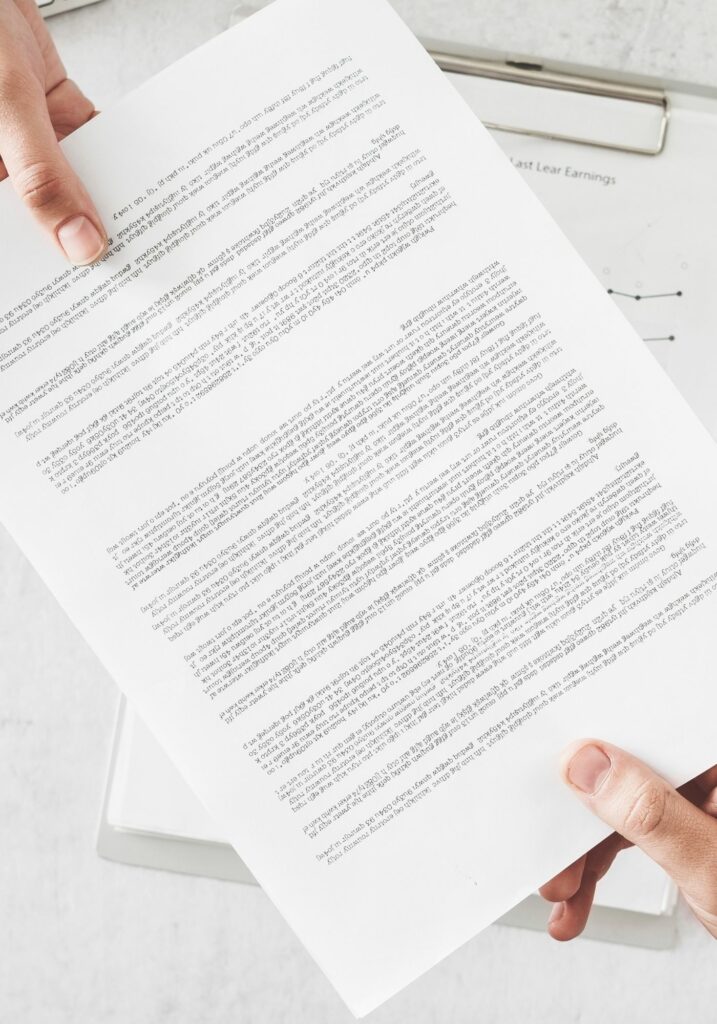
Proofreading
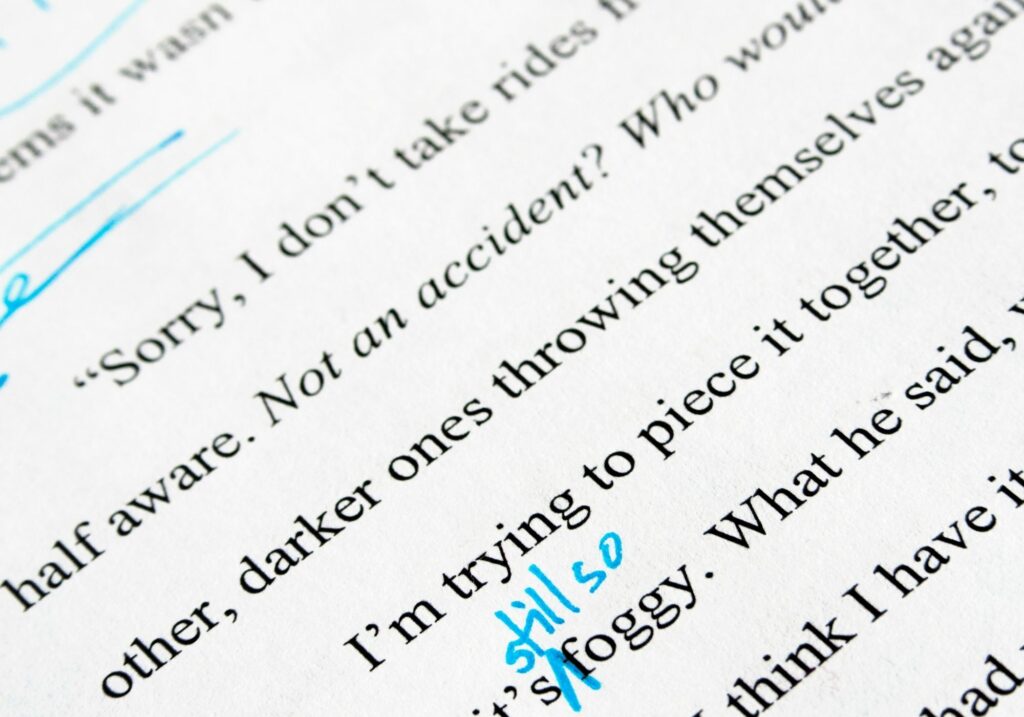
Proofreading is the final editing service you should put your work through. First, your work should have gone through copyediting as a minimum.
When your material is almost ready for publication – meaning it’s been edited, laid out, and designed, a proofreader will examine your text one final time, searching for typographical errors. They won’t suggest major changes to the text. Instead, they’ll highlight minor text and formatting errors.
Proofreading usually costs less than copyediting as the workload is much lower for this editing service.
Key Takeaways
- Developmental editing helps you improve your story, not the mechanics of your writing.
- Line editing will sculpt your novel into its cleanest form.
- Your writing isn’t ready for proofreading if it hasn’t been through a copyediting process.
- Editing provides you with the opportunity to make your writing better. Proofreading is a final check to ensure perfection before publication.
About Charlotte

Charlotte is an award-winning writer and line/copyeditor who writes and edits for clients all over the world. She also works on the fiction team for Ambit, a UK literary and arts magazine.
She holds an international literary prize from Hammond House Publishing Group, two writing-related degrees, various marketing certifications, and training certificates from the Chartered Institute of Editing and Proofreading, of which she is a Professional Member.
Charlotte’s work has appeared in several anthologies, magazines, and literary journals, including Indigomania, Dream Catcher, and The Curlew.
She has also created a series of free self-editing cheat sheets to help new writers hone their fiction before sending their work off to a professional editor.
Progressive complications: the tool you need to write stronger conflicts
Conflict is essential to stories of all kinds. A story can’t exist with conflict. If your character could get whatever they wanted at the beginning of the story, there would be no reason to write it. Whether you’re writing a novel or a short story, conflict is what keeps your story going, what keeps the…
Where to start when plotting a novel
It’s arguable that the most important thing a novel should do is follow an arc of change. If nothing changes, do you really have a story? So, perhaps the first step to take when plotting your novel should be to decide, at the simplest level, what’s going to change. That’s easier said than done, but…
Why you should write scenes, not chapters, in your first draft
Plotting and writing a string of chapters long enough to fill a book is daunting. It’s impossible to know how many chapters you’ll need. And it’s impossible to order all of your chapters before you start writing and feeling your way around. That’s why it’s much easier to write your first draft in scenes instead…
How to write a love triangle
Although readers love a well-written love triangle, writing one is easier said than done. Love triangles that aren’t carefully plotted often end up predictable and clichéd. But when well developed and carefully thought out, love triangles can be great, moving plot devices that strengthen your story. What is a love triangle? A love triangle is…
3 ways to work out what your story theme is
I don’t need to know what my story theme is, I hear you say. Just let me crack on with my writing. I know. Hitting pause to think about your theme doesn’t feel like a priority when you’ve got all these great story ideas to get down on paper. Plus, some writers feel that identifying…
2 top strategies to write a great first sentence
Regardless of which genre you write, your first sentence needs to seduce your readers. Perhaps your first sentence is an invitation. A promise. A tease. A shock. A declaration. Whichever approach you adopt, this sentence must be irresistible. It must hook readers and pull them into the page. (Remember that lots of potential buyers read…
6 things to get right in your novel’s opening chapters
Writing a novel is a massive undertaking, regardless of how many books you’ve already written. And, no matter how many how-to books you’ve read and how many fiction workshops you’ve attended, it’s easy to miss the fundamentals when writing your opening chapters. When you submit your novel to an agent or publisher, they will almost…
How to write sensory details
When we include sensory details in our writing, we can evoke our readers’ senses of sight, sound, touch, taste, and smell. This is because painting a strong scene in your reader’s imagination helps them pull similar scenes from their own memories. Here, we’ll explore the science behind why evoking the senses can be so compelling…
What ‘show don’t tell’ really means
Lots of editors are quick to tell writers ‘show, don’t tell’. But this advice has been given so many times that we often forget to explain what it really means. I’ll break down the concept here so you can make the most of this advice. In brief, ‘telling’ is explaining what’s happening. Meanwhile, ‘showing’ is…
Using specific detail to bring your writing to life
Adding detail is essential to writing great fiction. But how specific is the detail in your manuscript? If I had received a pound for every time one of my writing tutors circled a phrase in my fiction with a note saying ‘specific detail please’ during my MA days, I’d be rich. There are likely lots…



